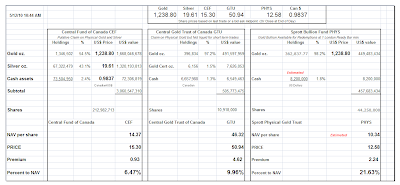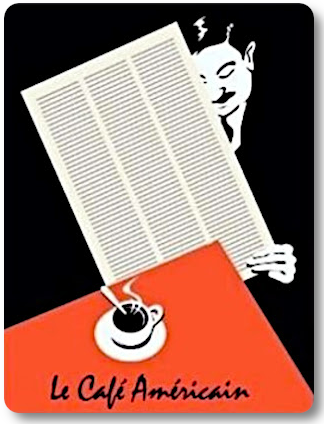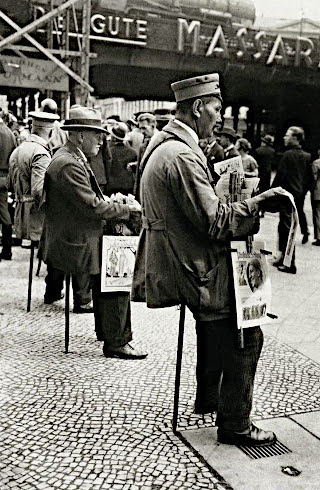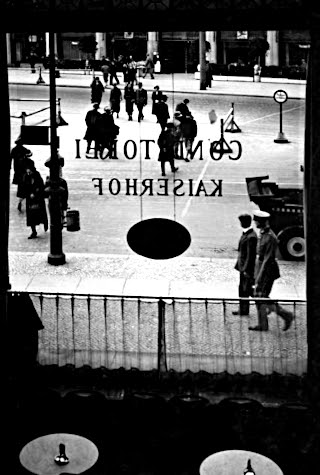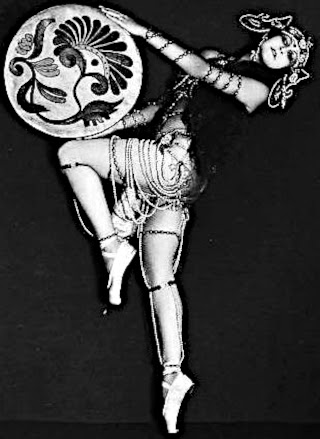The lie is comfortable, an illusion easy to live with, familiar, and safe.
Writing from the 'disgraced profession' of economics, James K. Galbraith speaks of the unspoken, the many frauds and deceptions underlying the recent financial crisis centered in the US. Many will read this and shake their heads in agreement, but will be unable to take the next logical step and internalize the implications of the depth and breadth of the dishonesty that enabled it then, and continues to sustain it, even today. Galbraith is asking 'why' and framing a further inquiry into the consequences of this unwillingness to reform.
"Some appear to believe that "confidence in the banks" can be rebuilt by a new round of good economic news, by rising stock prices, by the reassurances of high officials – and by not looking too closely at the underlying evidence of fraud, abuse, deception and deceit. As you pursue your investigations, you will undermine, and I believe you may destroy, that illusion."It is easier to go with the flow, relax, rationalize, and be diverted and entertained by 'the show.' The truth may set you free, but before that it can make you feel very insecure and uncomfortable, especially when it requires challenging the 'official story' and policy decisions. Better to say nothing offensive to the oligarchs, and even occasionally to utter intelligent sounding condemnations of those who dare to question the very things you wonder about, and fear, in order to prove your loyalty and to reassure yourself that you are a right-thinking, practical individual. For the disparity that is unavoidably noticed between what is seen and what is said makes one uneasy, fearful that they are losing their bearings, if not reason. And the vested interests play on those fears. See Techniques of Propaganda
The consequences of 'extend and pretend' will be to worsen the final outcome, the day of reckoning.
"The initial deviation from the truth will be multiplied a thousandfold." AristotleThe banks must be restrained, the financial and political system reformed, and balance restored to the economy, before there can be any sustained recovery.
Alternet
Why the 'Experts' Failed to See How Financial Fraud Collapsed the Economy
By James K. Galbraith
May 16, 2010
Editor's Note: The following is the text of a James K. Galbraith's written statement to members of the Senate Judiciary Committee delivered this May.
Chairman Specter, Ranking Member Graham, Members of the Subcommittee, as a former member of the congressional staff it is a pleasure to submit this statement for your record.
I write to you from a disgraced profession. Economic theory, as widely taught since the 1980s, failed miserably to understand the forces behind the financial crisis. Concepts including "rational expectations," "market discipline," and the "efficient markets hypothesis" led economists to argue that speculation would stabilize prices, that sellers would act to protect their reputations, that caveat emptor could be relied on, and that widespread fraud therefore could not occur. Not all economists believed this – but most did.
Thus the study of financial fraud received little attention. Practically no research institutes exist; collaboration between economists and criminologists is rare; in the leading departments there are few specialists and very few students. Economists have soft- pedaled the role of fraud in every crisis they examined, including the Savings & Loan debacle, the Russian transition, the Asian meltdown and the dot.com bubble. They continue to do so now. At a conference sponsored by the Levy Economics Institute in New York on April 17, the closest a former Under Secretary of the Treasury, Peter Fisher, got to this question was to use the word "naughtiness." This was on the day that the SEC charged Goldman Sachs with fraud.
There are exceptions. A famous 1993 article entitled "Looting: Bankruptcy for Profit," by George Akerlof and Paul Romer, drew exceptionally on the experience of regulators who understood fraud. The criminologist-economist William K. Black of the University of Missouri-Kansas City is our leading systematic analyst of the relationship between financial crime and financial crisis. Black points out that accounting fraud is a sure thing when you can control the institution engaging in it: "the best way to rob a bank is to own one." The experience of the Savings and Loan crisis was of businesses taken over for the explicit purpose of stripping them, of bleeding them dry. This was established in court: there were over one thousand felony convictions in the wake of that debacle. Other useful chronicles of modern financial fraud include James Stewart's Den of Thieves on the Boesky-Milken era and Kurt Eichenwald's Conspiracy of Fools, on the Enron scandal. Yet a large gap between this history and formal analysis remains.
Formal analysis tells us that control frauds follow certain patterns. They grow rapidly, reporting high profitability, certified by top accounting firms. They pay exceedingly well. At the same time, they radically lower standards, building new businesses in markets previously considered too risky for honest business. In the financial sector, this takes the form of relaxed – no, gutted – underwriting, combined with the capacity to pass the bad penny to the greater fool. In California in the 1980s, Charles Keating realized that an S&L charter was a "license to steal." In the 2000s, sub-prime mortgage origination was much the same thing. Given a license to steal, thieves get busy. And because their performance seems so good, they quickly come to dominate their markets; the bad players driving out the good.
The complexity of the mortgage finance sector before the crisis highlights another characteristic marker of fraud. In the system that developed, the original mortgage documents lay buried – where they remain – in the records of the loan originators, many of them since defunct or taken over. Those records, if examined, would reveal the extent of missing documentation, of abusive practices, and of fraud. So far, we have only very limited evidence on this, notably a 2007 Fitch Ratings study of a very small sample of highly-rated RMBS, which found "fraud, abuse or missing documentation in virtually every file." An efforts a year ago by Representative Doggett to persuade Secretary Geithner to examine and report thoroughly on the extent of fraud in the underlying mortgage records received an epic run-around.
When sub-prime mortgages were bundled and securitized, the ratings agencies failed to examine the underlying loan quality. Instead they substituted statistical models, in order to generate ratings that would make the resulting RMBS acceptable to investors. When one assumes that prices will always rise, it follows that a loan secured by the asset can always be refinanced; therefore the actual condition of the borrower does not matter. That projection is, of course, only as good as the underlying assumption, but in this perversely-designed marketplace those who paid for ratings had no reason to care about the quality of assumptions. Meanwhile, mortgage originators now had a formula for extending loans to the worst borrowers they could find, secure that in this reverse Lake Wobegon no child would be deemed below average even though they all were. Credit quality collapsed because the system was designed for it to collapse.
A third element in the toxic brew was a simulacrum of "insurance," provided by the market in credit default swaps. These are doomsday instruments in a precise sense: they generate cash-flow for the issuer until the credit event occurs. If the event is large enough, the issuer then fails, at which point the government faces blackmail: it must either step in or the system will collapse. CDS spread the consequences of a housing-price downturn through the entire financial sector, across the globe. They also provided the means to short the market in residential mortgage-backed securities, so that the largest players could turn tail and bet against the instruments they had previously been selling, just before the house of cards crashed.
Latter-day financial economics is blind to all of this. It necessarily treats stocks, bonds, options, derivatives and so forth as securities whose properties can be accepted largely at face value, and quantified in terms of return and risk. That quantification permits the calculation of price, using standard formulae. But everything in the formulae depends on the instruments being as they are represented to be. For if they are not, then what formula could possibly apply?
An older strand of institutional economics understood that a security is a contract in law. It can only be as good as the legal system that stands behind it. Some fraud is inevitable, but in a functioning system it must be rare. It must be considered – and rightly – a minor problem. If fraud – or even the perception of fraud – comes to dominate the system, then there is no foundation for a market in the securities. They become trash. And more deeply, so do the institutions responsible for creating, rating and selling them. Including, so long as it fails to respond with appropriate force, the legal system itself.
Control frauds always fail in the end. But the failure of the firm does not mean the fraud fails: the perpetrators often walk away rich. At some point, this requires subverting, suborning or defeating the law. This is where crime and politics intersect. At its heart, therefore, the financial crisis was a breakdown in the rule of law in America.
Ask yourselves: is it possible for mortgage originators, ratings agencies, underwriters, insurers and supervising agencies NOT to have known that the system of housing finance had become infested with fraud? Every statistical indicator of fraudulent practice – growth and profitability – suggests otherwise. Every examination of the record so far suggests otherwise. The very language in use: "liars' loans," "ninja loans," "neutron loans," and "toxic waste," tells you that people knew. I have also heard the expression, "IBG,YBG;" the meaning of that bit of code was: "I'll be gone, you'll be gone."
If doubt remains, investigation into the internal communications of the firms and agencies in question can clear it up. Emails are revealing. The government already possesses critical documentary trails -- those of AIG, Fannie Mae and Freddie Mac, the Treasury Department and the Federal Reserve. Those documents should be investigated, in full, by competent authority and also released, as appropriate, to the public. For instance, did AIG knowingly issue CDS against instruments that Goldman had designed on behalf of Mr. John Paulson to fail? If so, why? Or again: Did Fannie Mae and Freddie Mac appreciate the poor quality of the RMBS they were acquiring? Did they do so under pressure from Mr. Henry Paulson? If so, did Secretary Paulson know? And if he did, why did he act as he did? In a recent paper, Thomas Ferguson and Robert Johnson argue that the "Paulson Put" was intended to delay an inevitable crisis past the election. Does the internal record support this view?
Let us suppose that the investigation that you are about to begin confirms the existence of pervasive fraud, involving millions of mortgages, thousands of appraisers, underwriters, analysts, and the executives of the companies in which they worked, as well as public officials who assisted by turning a Nelson's Eye. What is the appropriate response?
Some appear to believe that "confidence in the banks" can be rebuilt by a new round of good economic news, by rising stock prices, by the reassurances of high officials – and by not looking too closely at the underlying evidence of fraud, abuse, deception and deceit. As you pursue your investigations, you will undermine, and I believe you may destroy, that illusion.
But you have to act. The true alternative is a failure extending over time from the economic to the political system. Just as too few predicted the financial crisis, it may be that too few are today speaking frankly about where a failure to deal with the aftermath may lead.
In this situation, let me suggest, the country faces an existential threat. Either the legal system must do its work. Or the market system cannot be restored. There must be a thorough, transparent, effective, radical cleaning of the financial sector and also of those public officials who failed the public trust. The financiers must be made to feel, in their bones, the power of the law. And the public, which lives by the law, must see very clearly and unambiguously that this is the case. Thank you.
James K. Galbraith is the author of The Predator State: How Conservatives Abandoned the Free Market and Why Liberals Should Too, and of a new preface to The Great Crash, 1929, by John Kenneth Galbraith. He teaches at The University of Texas at Austin.







